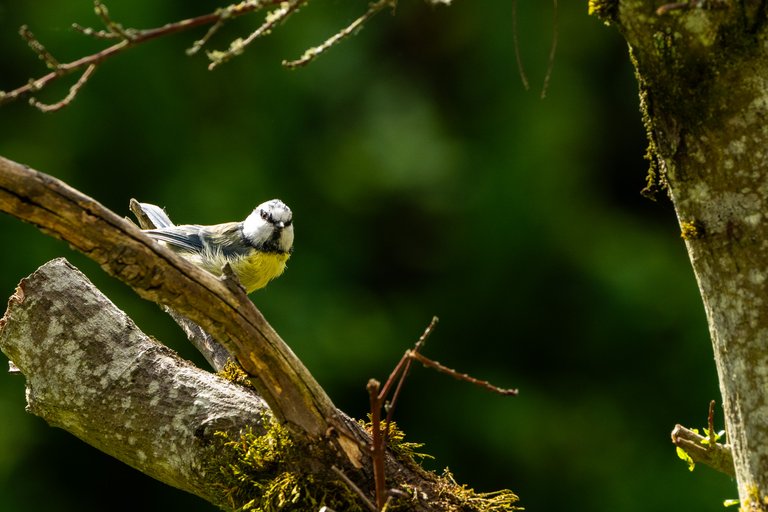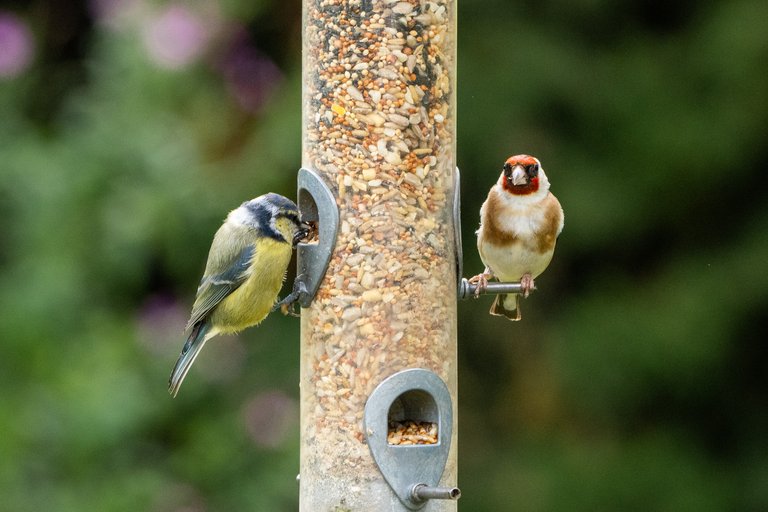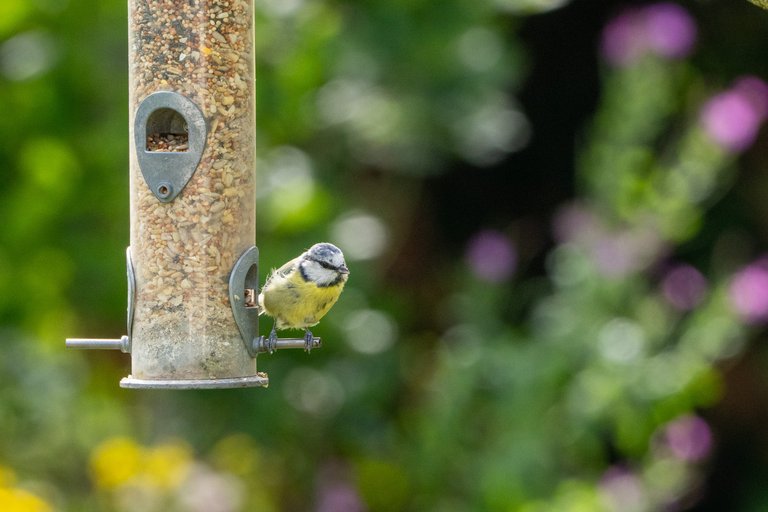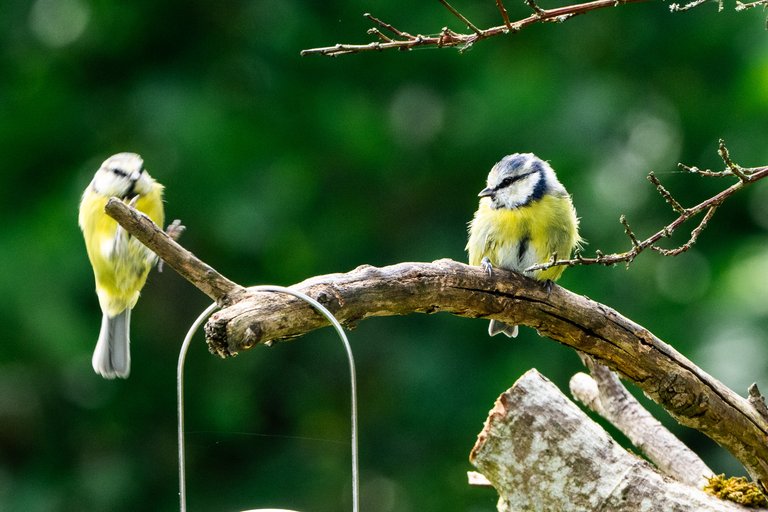
"A Blue Tit sits on a mossy branch": Photographer:F-Stop: f/10, Focal Length: 600mm, Exposure: 1/500 sec, ISO: 2000, Camera: Sony α7R V, Lens: Sony 200-600 F5.6-6.3 G OSS Lens, Location: N 51º 6' 39.559", W 1º 45' 14.378", Taken: Thursday, 29 August 2024 11:32 @richardslater,
A common visitor to Gardens of the British Isles, the Blue Tit (Cyanistes caeruleus) is one of our more colourful. More formerly known as the Eurasian Blue Tit it is a species common across Europe and is closely related to the African Blue Tit.

"A Blue Tit and a Gold Finch feed from a feeder": Photographer:F-Stop: f/11, Focal Length: 600mm, Exposure: 1/250 sec, ISO: 2000, Camera: Sony α7R V, Lens: Sony 200-600 F5.6-6.3 G OSS Lens, Location: N 51º 6' 39.504", W 1º 45' 14.541", Taken: Thursday, 29 August 2024 12:24 @richardslater,
Blue Tits like many others of the birds in the Passeriformes, literally “Sparrow Shaped”, will eat small insects, caterpillars, nuts, and seeds. They are quite fussy eaters though often seen picking through food in feeders and throwing the seeds they don't want to the ground.

"A Blue Tit perches on a bird feeder": Photographer:F-Stop: f/11, Focal Length: 600mm, Exposure: 1/400 sec, ISO: 2000, Camera: Sony α7R V, Lens: Sony 200-600 F5.6-6.3 G OSS Lens, Location: N 51º 6' 39.655", W 1º 45' 14.159", Taken: Thursday, 29 August 2024 12:51 @richardslater,
After sitting and watching them feed for hours I also noticed they were much more "flighty" than the Finches, Blue Tits will typically search for the food then immediately fly away once they found the morsel they were looking for.

"A Blue Tit lands on a branch, next to another Blue Tit": Photographer:F-Stop: f/11, Focal Length: 600mm, Exposure: 1/200 sec, ISO: 2000, Camera: Sony α7R V, Lens: Sony 200-600 F5.6-6.3 G OSS Lens, Location: N 51º 6' 39.957", W 1º 45' 14.368", Taken: Thursday, 29 August 2024 12:54 @richardslater,
They also had a tendency to perform reconnaissance on the feeder, hopping about in the branches nearby before committing. As it turns out this is a self-preservation technique as I saw two Sparrowhawk attacks, one of which appeared to be successful.

"A blue tit checks out the bird feeder from its perch": Photographer:F-Stop: f/11, Focal Length: 600mm, Exposure: 1/250 sec, ISO: 2000, Camera: Sony α7R V, Lens: Sony 200-600 F5.6-6.3 G OSS Lens, Location: N 51º 6' 39.765", W 1º 45' 14.159", Taken: Thursday, 29 August 2024 12:56 @richardslater,
Fortunately these beautiful birds have thrived alongside humans, with a solid population across the UK and Ireland, their song is frequently heard even when you can't see the birds themselves.
While they have plenty of predators in Sparrowhawks, Weasels, Jays and Squirrels, they are agile and seem to have found a comfortable place in modern parks, gardens, and woodland.
very beautiful little birds they are so adorable.
Congratulations, your post has been added to WorldMapPin! 🎉
Did you know you have your own profile map?
And every post has their own map too!
Want to have your post on the map too?
The birds are very beautiful
You took cute pictures of them
Very kind of you to say, I really enjoyed being able to use a long lens to get close to them without actually disturbing them.
Such colourful birds :)

Sending Love and Ecency Curation Vote!
Thanks for the comment and the vote :)
Woww.. That's amazing.. 🐦🐦🐦
👍👍👍 thank you..
Congratulations @richardslater! You have completed the following achievement on the Hive blockchain And have been rewarded with New badge(s)
Your next target is to reach 44000 upvotes.
You can view your badges on your board and compare yourself to others in the Ranking
If you no longer want to receive notifications, reply to this comment with the word
STOPCheck out our last posts: